$29.00
Bull Riding Rowels Rock Star
The Rock Star bull riding rowels are for bull riders wanting to get a nice deep hold.
Stainless Steel 1 1/4″ 5 point bull riding rowels.
Bull Riding Rowels Rock Star
The Rock Star bull riding rowels are for bull riders wanting to get a nice deep hold.
Stainless Steel 1 1/4″ 5 point bull riding rowels.
Stainless Steel rowels won’t rust
Sold in Pairs
Bull riding rowels are like guitar strings. The more you use them eventually you will need to replace them. Depending on how many bulls you get on in a year you should always change out rowels every 6 months to a year.
BULL RIDING ROWELS
Bull riding rowels are a critical component of the riding spurs used in the rodeo sport of bull riding. A rowel is the wheel or star-shaped disc on the end of the spur that comes into contact with the bull. Here is an overview of the purpose, regulations, and considerations surrounding bull riding rowels:
### Purpose of Rowels in Bull Riding
Rowels are designed to provide the rider with the ability to cue the bull subtly and effectively. The rowel spins as it contacts the bull’s skin, which is thought to be less injurious than a fixed spur. The intention is not to harm the bull but rather to encourage it to buck and enhance the difficulty and spectacle of the ride.
Features of Bull Riding Rowels
*Shape*: Usually circular with pointed projections, resembling a cog or a star.
– *Material*: Most rowels are made of metal, such as steel, to ensure durability and effectiveness.
– *Size*: The size of the rowel can vary, but there are often specific regulations governing the diameter and length of the points in professional competitions.
### Regulations for Rowels
In professional bull riding, there are strict regulations about the type of rowels that can be used:
– *Spacing and Sharpness*: Rowels must not be too sharp, to protect the bulls from cuts or punctures. They are required to be dulled and the points evenly spaced.
– *Diameter*: Professional organizations like the Professional Bull Riders (PBR) often dictate a maximum diameter for the rowels to ensure a standard level of stimulation to the bull.
– *Rowel Movement*: Rowels are required to be freely moving and not locked or fixed.
Ethical Considerations
While riders argue that the use of rowels is essential for their performance and safety, animal rights advocates often question the necessity of rowels, claiming they may cause stress or discomfort to the animals. Regulatory bodies within the sport make continuous efforts to ensure the equipment used is humane and minimizes the chance of injury to both the bull and the rider.
### Care and Maintenance
For riders, maintaining their equipment, including the rowels, is essential. This means regularly checking for damages, ensuring the rowel spins freely, and is not too sharp or too dull. Proper care ensures both the performance and the humane treatment of the bull.
### Conclusion
Bull riding rowels, while a small part of the spur, play a significant role in the sport of bull riding. Their design, regulation, and use are subject to scrutiny and constant evaluation to balance the tradition of the sport, the safety of the riders, and the welfare of the animals involved.
BULL RIDING SPURS
Bull riding spurs are specialized pieces of equipment used by bull riders to help maintain control and communicate with the bull during a ride. Here is some information about bull riding spurs:
1. Purpose: The main purpose of bull riding spurs is to provide the rider with increased grip and control over the bull. They are attached to the rider’s boots and used to make contact with the bull’s sides, encouraging forward movement and providing a degree of control during the ride.
2. Design: Bull riding spurs typically consist of a metal shank or rowel with pointed, short spikes or perches. They are designed to dig into the bull’s tough hide to provide grip, allowing the rider to stay on the bull longer and maintain control.
3. Safety: While bull riding spurs can be effective tools for riders, it’s important to note that safety measures are taken to ensure the well-being of both the rider and the bull. The spurs used in professional bull riding are dulled and have specific regulations to prevent excessive harm to the animals.
4. Technique: Skilled bull riders use their spurs strategically, applying pressure with their legs to communicate with the bull. By using the spurs to “mark out” the bull, riders can maintain control and avoid disqualification. The proper use of spurs requires timing, balance, and coordination.
5. Regulations: The use of spurs in bull riding competitions is strictly regulated. There are rules regarding spur design, length, and blunting to minimize the risk of injury to the animals. These regulations ensure the sport is conducted with the highest regard for animal welfare.
SPURS FOR BULL RIDING
Spurs are an important tool for any cowboy. In the context of bull riding, they are not just used for urging the bull to move faster but are incorporated into the rider’s technique for staying on the bull.
Bull riding spurs are different from regular cowboy spurs; they must adhere to specific rules and regulations set by professional bull riding organizations. For example, the Professional Bull Riders (PBR) organization requires that spurs are blunt and must not have any sharp edges so as to prevent injury to the bull.
The rowels, the circular, rotating part of the spur, have to be loose and not fixed. This is to ensure they roll over the bull’s hide rather than dig into it. Spurs for bull riding typically have a rowel diameter of 2 to 2.5 inches.
Spurs in bull riding also assist in balance. Bull riders will often “spur” their bull, swinging their legs away from their body and then back again. The gist is to improve the rider’s balance and potentially enhance his score. It’s a misconception that riders use spurs to make the bull buck harder. The bucking action of a bull is a natural, instinctive response, not a result of being spurred.
When it comes to materials, bull riding spurs are typically made from durable, heavy-duty metals like steel or iron, so they can withstand the sheer power and force typical of a bull riding event.
MEXICAN BULL RIDING SPURS
Mexican bull riding spurs, often referred to as “espuelas charros”, are a traditional type of spurs used in Mexican rodeo events such as charreada and jaripeo. These spurs have distinctive features that are designed to provide the rider with more control and stability while riding a bull.
The Mexican bull riding spurs typically have rowels, which are small revolving wheels or discs with blunt points or dulled edges. The rowels can vary in size, with larger rowels usually providing more grip and control. The rowels are attached to the heel band, which is the part that goes around the rider’s boot heel.
In addition to the rowels, the heel band of the Mexican spurs often includes a shank, which is a curved piece that extends from the heel band towards the back of the boot. The shank can be straight or have a slight curve, depending on the rider’s preference. The length of the shank can also impact the amount of leverage available to the rider.
The purpose of these unique spurs is to allow the rider to communicate effectively with the bull while maintaining balance and control. By using their spurs, the rider can apply pressure to the bull’s sides, providing cues for direction and encouraging the bull’s movement. The rowels help to grip the hide of the bull, ensuring that the rider’s commands are felt by the animal.
It’s important to note that bull riding can be a dangerous activity, and individuals should always prioritize safety when participating in any rodeo event. Proper training, equipment, and adherence to safety guidelines are crucial for the well-being of both the rider and the animal
BULL RIDING SPUR STRAPS
Bull riding spur straps are an essential accessory used by bull riders to secure their spurs to their boots. These straps play a crucial role in maintaining control and stability while riding a bull. Here are some key points about bull riding spur straps:
1. Purpose: Spur straps are primarily used to keep the spurs securely in place on the rider’s boots. This allows the rider to have better control and grip when riding a bull.
2. Material: Bull riding spur straps are typically made of durable leather or synthetic materials. Leather straps are quite popular due to their strength and ability to endure the rugged environment of bull riding.
3. Design: Spur straps are designed to be adjustable, allowing riders to customize the fit to their specific boot size and personal preferences. They usually feature buckles or snaps for easy fastening and loosening.
4. Safety: Safety is paramount in bull riding, and spur straps play a role in preventing spurs from accidentally dislodging during a ride. Properly secured spurs help riders maintain balance and prevent potential accidents.
5. Maintenance: It is essential to regularly check the condition of your spur straps and replace them if they show signs of wear and tear. Keeping them clean and free from dirt and debris will help prolong their lifespan.
6. Compatibility: Different bull riders may prefer different styles of spurs. It’s crucial to choose spur straps that are compatible with the spurs you use, ensuring a secure fit.
Be the first to review “Bull Riding Rowels Rock Star” Cancel reply
Related products
Bull Riding Rowels
Bull Riding Rowels
Bull Riding Rowels
Bull Riding Rowels
Bull Riding Rowels
Bull Riding Rowels
Adult Bareback Riding Spurs 2 1/4″ Straight Shank 15° Offset
Bull Riding Rowels
Bull Riding Rowels


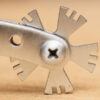
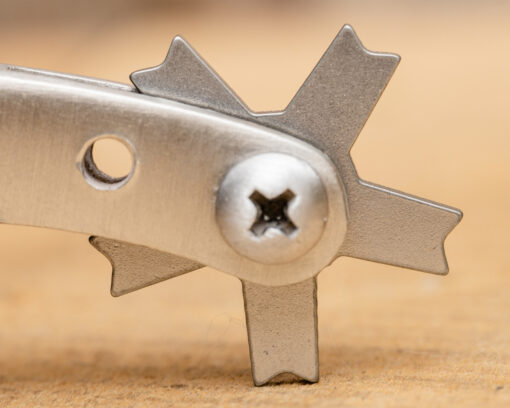
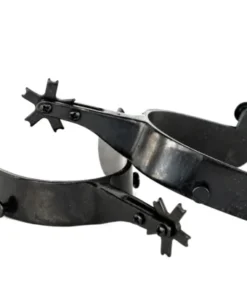


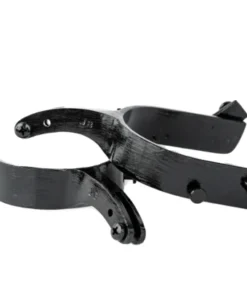



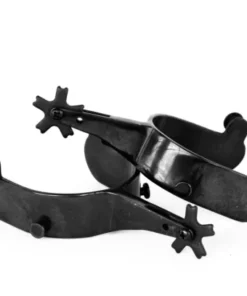
Reviews
There are no reviews yet.